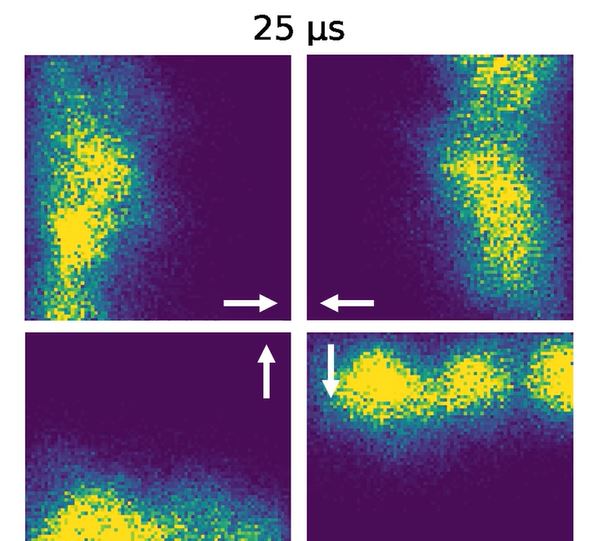Among the most promising unfilled gaps in materials research is an ability to accurately predict real-world physical properties of a material based on its molecular structure.

Credit: Salleo Research Group
Among the most promising unfilled gaps in materials research is an ability to accurately predict real-world physical properties of a material based on its molecular structure.
Researchers at Stanford University say they are one step closer to this elusive goal after successfully using electron microscopy to visualize the real-world arrangement of molecules in a new-age polymer and combining it with computer modeling to simulate how certain structural changes could improve the flow of electricity.
“By revealing the key connection between a polymer’s structure and its electrical function, this ability to visualize real microstructures and tinker with them mathematically offers new and powerful insight into the design of promising new materials,” said Alberto Salleo, a professor of materials science and engineering at Stanford and one of the senior authors of the study, which appears this week in Proceedings of the National Academy of Sciences.
The advance could greatly accelerate design and development of next-generation polymers. The material studied in this research, PBTTT, is among a class of semiconducting polymers that could be used in thin, flexible computer electronics, displays, and sensors, the researchers say, but their technique might be generalizable to other areas of polymer research as well.
Individual polymer molecules are difficult to study with existing microscopy. This has led to a gap in the understanding of individual molecules and the performance of bulk materials, as would be needed to create next-generation flexible transistors.
To bridge that gap, the researchers turned to computer simulations guided by real-world microscopy data to investigate how groups of molecules are connected at scales up to a few hundred nanometers – the mesoscale between individual molecules and bulk materials.
“These simulated chains can be modified on the computer in ways that are difficult, if not impossible, in the real world. We can use these tools to investigate the effect of different design strategies for improving these systems,” said co-author Andrew Spakowitz, a professor of chemical engineering at Stanford and an expert in the modeling of soft materials such as the pliable PBTTT explored in the study.
The insights the team learned through their approach improves our understanding of how the arrangement, coupling, and geometries of chains of molecules across the mesoscale improve – or inhibit, as the case may be – electrical transport through bulk polymers.
For example, the researchers were able to confirm that aligning chains “perfectly” produces an improvement in charge mobility but also showed that the improvement is surprisingly modest. Stretch the chains, however, and there is a much larger effect on electrical transport. They also showed that going a step further and simply rearranging, or “shuffling,” the molecules produces a modest and somewhat surprising improvement in mobility.
“This would suggest that longer and stiffer chains of polymers with improved coupling are the most promising avenues for improving electrical conduction in these materials,” Salleo said, adding that the team’s approach creates an altogether new pipeline for studying the impact of structure on charge transport in PBTTT and other promising polymer systems.
Journal
Proceedings of the National Academy of Sciences
DOI
10.5281/zenodo.6585396
Article Title
Closing the loop between microstructure and charge transport in conjugated polymers by combining microscopy and simulation
Article Publication Date
7-Nov-2022




